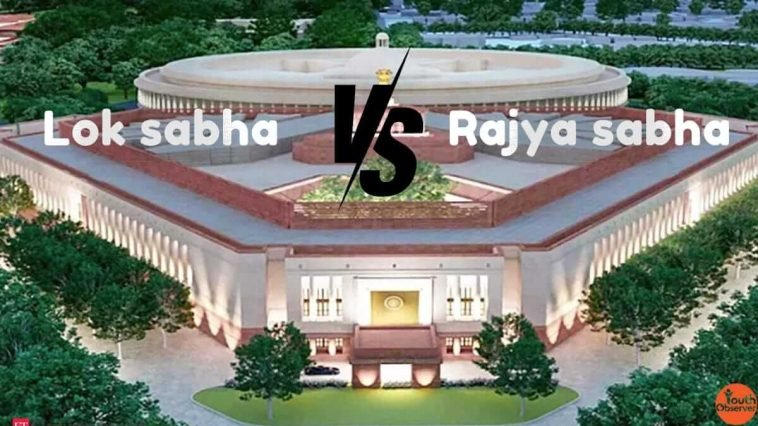India’s Parliament is the supreme law-making body, and it has two houses: the Lok Sabha (House of the People) and the Rajya Sabha (Council of States). Both play crucial roles, but there are some key differences between them. Let’s break it down!
Lok Sabha: The Voice of the People
- Directly Elected: The members of the Lok Sabha are directly elected by the people of India in a general election held every five years (unless dissolved sooner).
- Represents the People: The Lok Sabha is seen as the more representative house, as its members come directly from various constituencies across the country.
- Stronger Powers: The Lok Sabha enjoys greater power than the Rajya Sabha. It has the sole authority to pass money bills (related to taxes and spending), and no bill can become a law without its approval.
- Shorter Term: Members of Lok Sabha serve a term of five years, which aligns with the election cycle.
Rajya Sabha: The House of Elders
- Indirectly Elected: Members of the Rajya Sabha are not directly elected by the people. They are chosen by the elected members of the state legislative assemblies and the Union Territories (UT) legislative assemblies.
- Represents the States: The Rajya Sabha represents the states and union territories of India. It ensures that the interests of all states are considered in national legislation.
- Reviewing Power: While the Rajya Sabha cannot introduce money bills, it can review and recommend changes to them. It also plays a crucial role in passing non-money bills.
- Longer Term: Members of the Rajya Sabha have a longer term of six years, with one-third of the members retiring every two years. This ensures continuity and experience in the upper house.
Working Together for India
Both the Lok Sabha and the Rajya Sabha work together to create laws for the country. While they have some differences, they complement each other to ensure a balanced and well-considered legislative process.
Here’s a simple table that summarizes the main changes:
| Feature | Lok Sabha | Rajya Sabha |
|---|---|---|
| Representation | People of India | States and Union Territories |
| Election | Direct election by the people | Indirect election by state legislatures |
| Term | 5 years | 6 years (one-third retiring every two years) |
| Power over Money Bills | Sole authority to pass | Can review and recommend changes |
| Power over other Bills | Can introduce and pass | Can review, recommend changes, and pass |
While both the Lok Sabha and Rajya Sabha are important parts of the Indian parliamentary system, they have distinct roles and compositions. The Lok Sabha represents the people and holds primary legislative authority, whereas the Rajya Sabha represents the states and union territories and serves as a revising chamber. Understanding the differences between these two houses is essential for comprehending the functioning of India’s democratic system.

